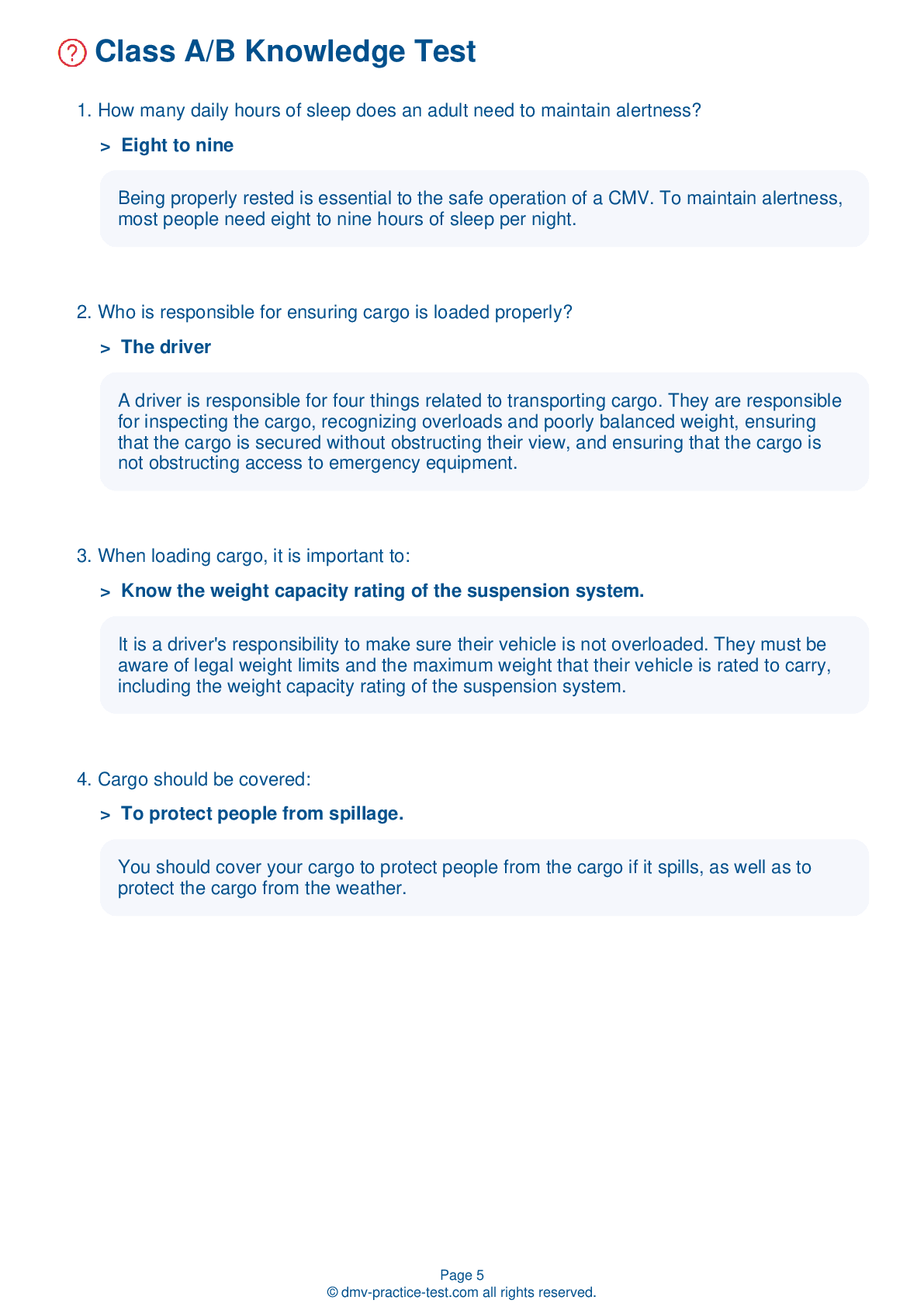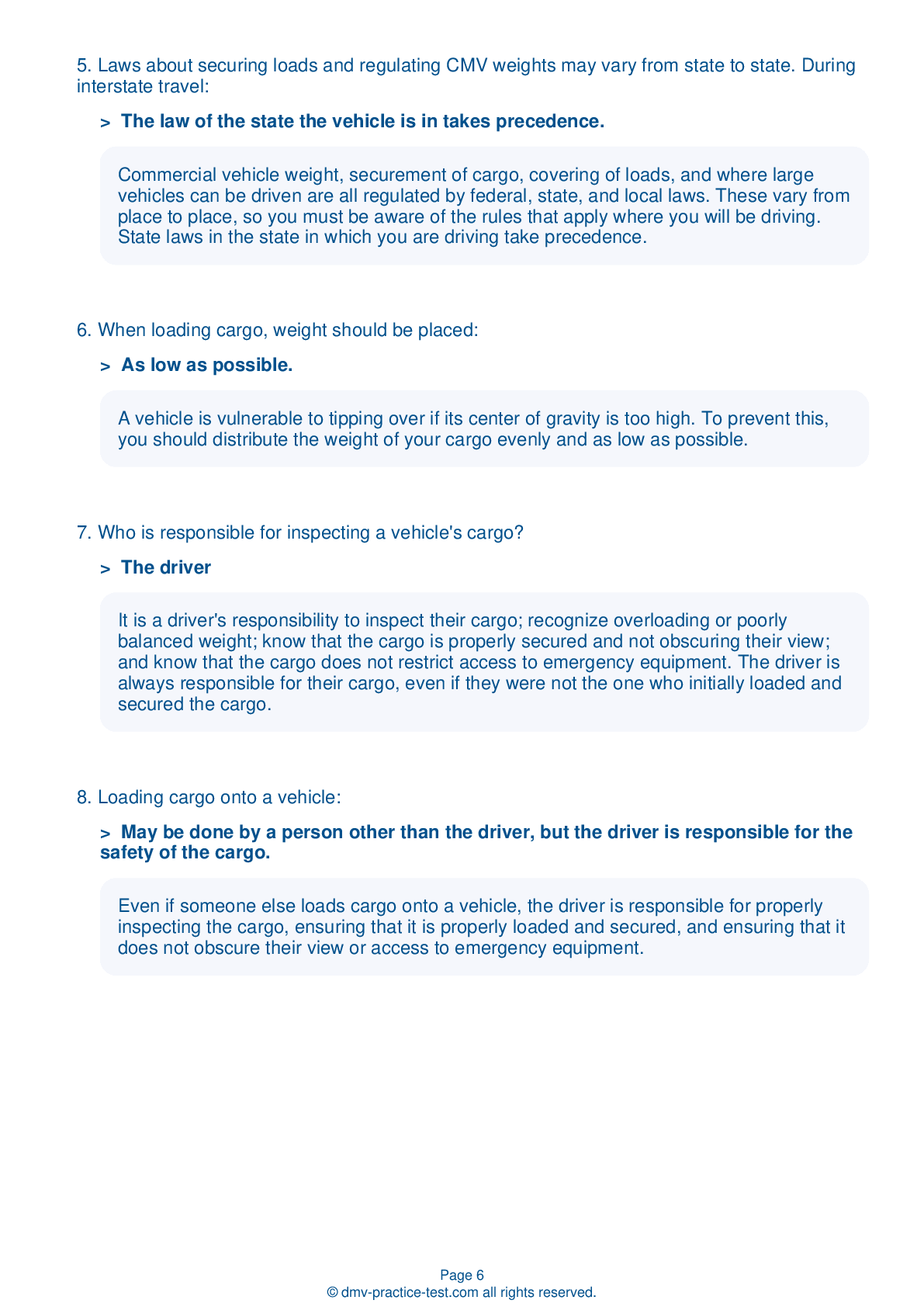Class B Driving Test | Connecticut 2025 #1 Page 6 of 7
Train for FREE online with our Connecticut class B license test. The official exam test consists of several obligatory parts, with all of them checking your knowledge of different blocks of road rules. If you need to obtain a CT CDL class B permit in 2025, practice as much as possible. Free sample tests published on our website will help you check and improve your knowledge and boost your grades. Please bear in mind that CDL class B requirements may vary from state to state.
36 . Air tanks usually hold enough compressed air:
In an air braking system, the air storage tanks can usually hold enough compressed air for the brakes to be used several times.
37 . During the driving test, when encountering a railroad crossing, you should:
During the on-road driving test, do not stop, change gears, pass another vehicle, or change lanes while any part of your vehicle is in a railroad crossing.
38 . When approaching an active railroad crossing:
At a railroad crossing, do not assume that you will hear an approaching train. Trains may be prohibited from sounding their horns in certain areas, or the sound of its horn may be covered by noise from your vehicle. Do not assume that warning lights or other signals will announce a train.
39 . What should happen before the air pressure in an air brake system tank falls below 55 psi?
The low air pressure warning signal must activate before the air supply pressure drops below 55 psi in the air tank. If the warning signal does not turn on when being tested during an inspection, the vehicle is not safe to drive.
40 . Blocking a load:
Cargo should be blocked to prevent it from sliding around in transit. The shifting of weight in transit can make steering and handling difficult for the driver.
41 . Having more than one license can result in a fine of up to:
It is illegal for a person to have more than one license. Violation of this law can be punishable by jail time and/or a fine of up to $5,000.
42 . The air compressor is connected to the:
The air compressor of an air brake system is connected to the engine through gears or a v-belt. The compressor may be air-cooled or cooled by the engine cooling system.
See the exact questions that will be on the 2025 Connecticut DMV exam.
99.2% of people who use the cheat sheet pass the FIRST TIME
Lillian MCcranie explains how our CDL study guide was helpful in passing the exam and recommends it to everyone.
Cameron tells us how he purchased the CDL exam, and found it to be a useful tool which helped him pass the exam and find a job.



